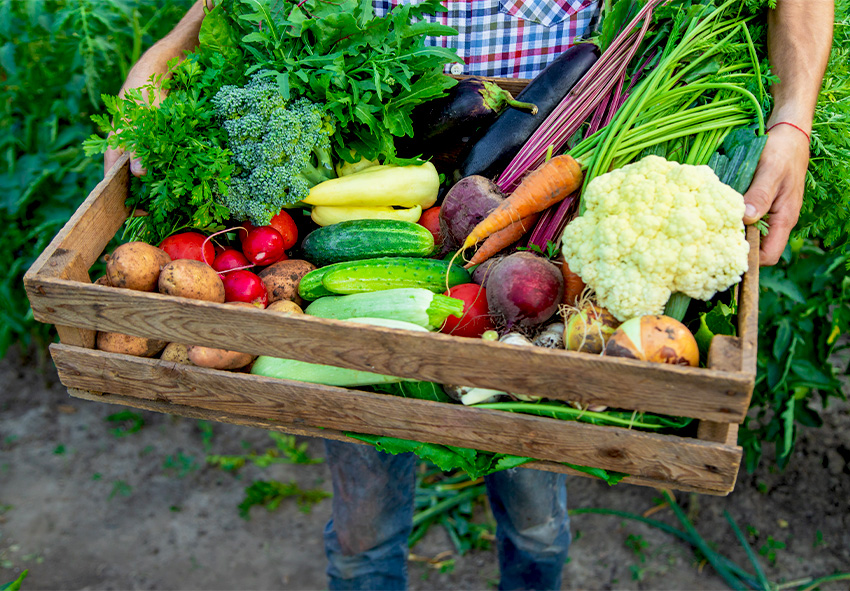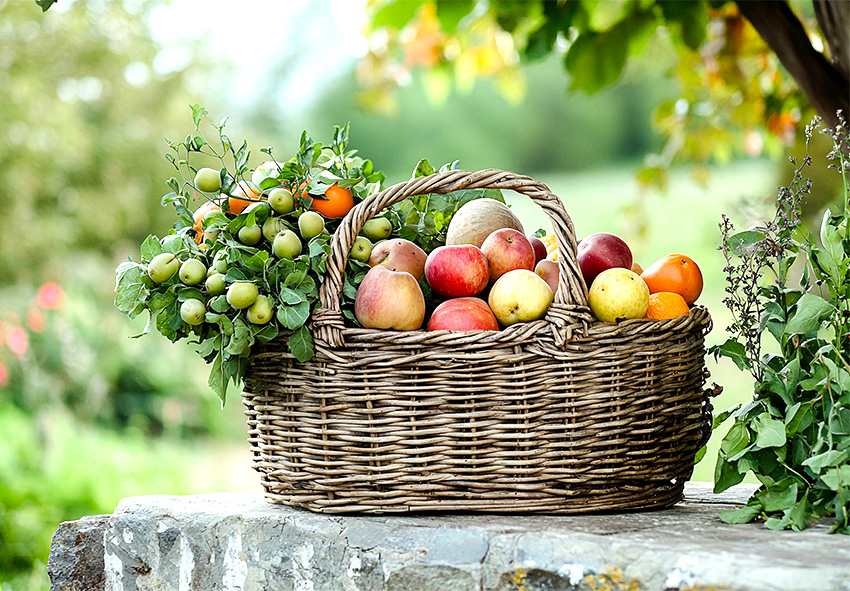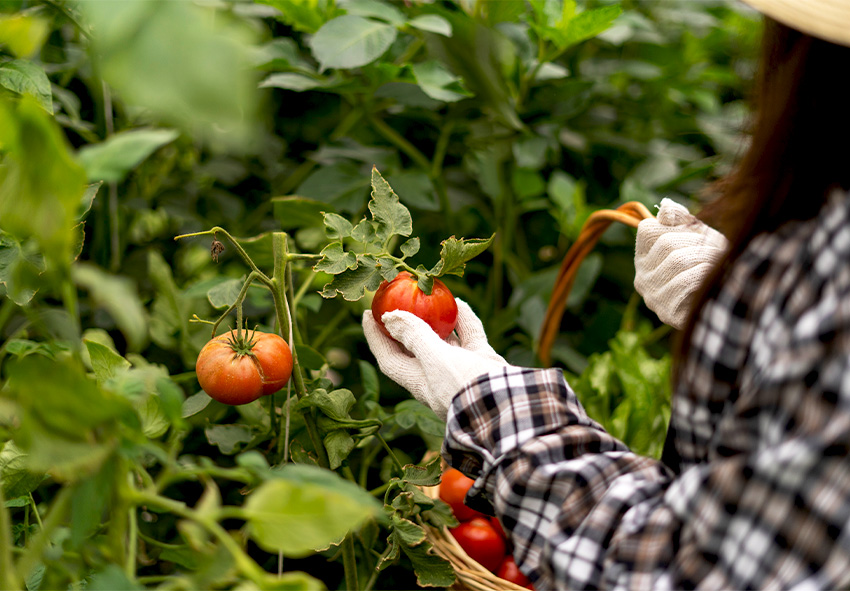Summer is one of the most rewarding times for home gardeners, bursting with colorful, flavorful, and nutritious crops. Whether you’re growing tomatoes on a balcony or managing a full vegetable patch, knowing when and how to harvest is key to maximizing your garden’s potential. In this guide, we’ll walk you through the essentials of summer harvesting — from timing and techniques to crop-specific tips for vegetables, herbs, and fruits. Our gardening blog is a perfect place to find any information you need!
Understanding the Summer Harvest Season

The summer harvest season typically stretches from late June through early September, depending on your planting zone. It’s a period of rapid growth, fruiting, and ripening for many warm-season crops. Understanding how different plants mature and what signs to look for ensures you don’t miss your harvest window.
Early vs. Late Summer Crops
Early summer harvests include crops like lettuce, radishes, and strawberries. These crops mature quickly and are often planted in spring. Late summer, on the other hand, brings in heat-loving produce like tomatoes, eggplants, and melons — requiring patience but rewarding with rich flavors.
Signs That Your Crops Are Ready
Knowing exactly when to harvest your crops is crucial for flavor, texture, and yield. Each vegetable, herb, or fruit has distinct visual and physical cues that indicate peak ripeness. Paying close attention to these signs will help you pick at just the right time for the best results:
- Color Changes: Most fruits and vegetables develop richer, deeper color when ripe. Tomatoes, peppers, and strawberries, for example, should show vibrant, even coloring without green patches.
- Firmness or Softness: Gently squeeze produce — some, like cucumbers, should be firm, while others, like peaches, yield slightly to pressure when ready.
- Size and Shape: Mature crops typically reach a specific size and shape. Overgrown zucchinis or carrots may become woody, while underdeveloped ones can lack flavor.
- Ease of Harvest: Ripe produce usually comes off the plant with minimal resistance. If you have to tug hard, it might not be ready yet.
- Aroma: Many ripe fruits — like melons and tomatoes — emit a noticeable, sweet fragrance when they’re at their peak.
When to Harvest Vegetables in Summer
Harvesting vegetables at the right time improves taste, texture, and encourages the plant to produce more. Summer is when many vegetables reach their peak, so regular monitoring is essential. Frequent picking also helps reduce waste and keeps your garden looking tidy and healthy.
Leafy Greens
Lettuce, spinach, and kale are best harvested when leaves are medium-sized and tender. Use clean scissors or pinch off outer leaves while leaving the inner rosette intact to allow regrowth. Avoid harvesting in the heat of the day as this can lead to wilting.
Fruit Vegetables
Tomatoes should be picked when fully colored and slightly soft to the touch. Zucchinis are best when they’re about 6–8 inches long for best texture. Peppers can be harvested green or left to ripen to red, orange, or yellow for more sweetness.
Root Crops
Root vegetables like carrots, radishes, and beets can be pulled when they’ve reached the desired size — check the crown peeking out of the soil. Use a fork or spade to loosen the soil and gently lift the roots to avoid damage.
Best Summer Fruits to Harvest

Fruit harvesting in summer is incredibly satisfying, especially with juicy, sun-ripened treats like berries, melons, and stone fruits. Timing is everything — harvest too soon and they’re bland; too late, and they spoil quickly. Keep a close eye on appearance, aroma, and texture.
Berries
Strawberries should be bright red and easily detach with a gentle pull. Blueberries are ripe when they turn a deep blue and come off the stem with no resistance. Raspberries are best when fully colored and slightly soft.
Stone Fruits and Melons
Peaches and plums are ready when they yield slightly to pressure and smell sweet. Melons like cantaloupes should have a fragrant aroma and the blossom end should give when pressed. Watermelons show readiness through a dull hollow sound and yellowing underside.
Harvesting Herbs in Summer
Summer is ideal for harvesting herbs because their oils are at their most concentrated, offering peak aroma and flavor. Regular cutting also encourages bushier growth and prolongs the life of annual herbs. Harvest early in the morning after the dew has dried for best results.
Leafy Herbs (e.g., Basil, Mint, Parsley)
Pinch or snip leaves just above a leaf node to promote branching. Harvest before the plant flowers, as the flavor declines afterward. Use clean shears and avoid removing more than one-third of the plant at a time.
Woody Herbs (e.g., Rosemary, Thyme, Sage)
Trim sprigs as needed, focusing on soft new growth rather than older woody stems. These herbs are hardy and can be harvested more frequently without harm. Regular trimming maintains a compact shape and stimulates fresh growth.
Tools and Techniques for an Efficient Harvest
Using the right tools makes harvesting easier and protects your plants and produce. Investing in basic harvesting gear pays off in efficiency and reduces accidental damage. Clean tools also help reduce the spread of pests and disease.
Clean and Sharp Tools
Using clean, sharp tools during your summer harvest not only makes the job easier but also helps keep your plants healthy. Dirty or dull tools can spread diseases and damage stems or fruit, reducing yield and quality. Regular maintenance ensures your harvest is efficient and safe for both you and your garden. Here are some tips for you:
- Disinfect Before Use: Wipe blades with rubbing alcohol or a bleach solution to prevent the spread of plant diseases.
- Sharpen Cutting Tools Regularly: Keep pruners, scissors, and knives sharp to make clean cuts that minimize plant stress and reduce bruising.
- Remove Dirt and Sap Build-up: Clean off soil, sap, and plant residue after every harvest session to keep tools functioning properly.
- Lubricate Moving Parts: Apply oil to hinges and joints on pruners or shears to maintain smooth operation and prevent rust.
- Store Tools Properly: Keep tools dry and organized in a tool rack or container to extend their lifespan and make them easy to access when needed.
Proper Handling and Storage
Handle fruits and vegetables gently to avoid bruising, which speeds up spoilage. Use shallow baskets or colanders to prevent stacking soft produce like tomatoes or berries. Store your harvest according to the crop — some prefer refrigeration, others stay fresher at room temperature.
Summer Gardening Tips for Better Harvests

Beyond harvesting, a few simple summer garden care practices can dramatically improve your yields. These include watering techniques, pest management, and mid-season fertilizing. Healthy plants equal healthy harvests!
Watering and Mulching
Deep watering helps roots grow strong, especially during dry spells. Mulching retains moisture and keeps the soil temperature stable. Organic mulch like straw or shredded leaves also suppresses weeds.
Fertilizing Mid-Season
Use a balanced fertilizer to replenish nutrients after the first harvest. Avoid over-fertilizing, especially with high-nitrogen formulas that promote leaves over fruit. Liquid seaweed or compost tea are great organic options.
Monitoring for Pests and Diseases
Aphids, whiteflies, and fungal issues can explode in summer. Check plants regularly, especially the undersides of leaves. Neem oil, insecticidal soap, and manual removal help keep things in check.
Common Summer Harvesting Mistakes to Avoid
Even experienced gardeners can make harvesting mistakes that affect the quality or quantity of their crops. Being aware of these pitfalls will help you get the most out of your summer garden. Most issues are easily avoided with consistent observation and proper technique:
- Harvesting Too Late or Too Early: Harvesting too early can result in bland or tough produce, while waiting too long often leads to overripe or woody crops. Each plant has a sweet spot for harvesting — learn to recognize it. Erring on the side of slightly early is often better than too late.
- Overhandling Delicate Crops: Soft-skinned fruits like tomatoes and berries can bruise easily if handled roughly. Always use two hands or cradle the fruit gently. Avoid stacking produce in deep containers where the weight can crush lower layers.
- Neglecting Successive Harvests: Many crops produce more when harvested regularly. Beans, zucchini, and herbs especially benefit from frequent picking. Letting produce stay too long on the plant signals it to stop producing, so harvest often to keep things growing.
Conclusion
A successful summer harvest is one of the most rewarding parts of gardening. With the right timing, tools, and techniques, you can enjoy fresh produce, vibrant herbs, and juicy fruits all season long. Don’t forget to explore our online plant store for premium seeds, tools, and seasonal gardening kits — everything you need for your next fruitful harvest!
Frequently Asked Questions (FAQs) about Summer Harvesting
1. What are the best times of day to harvest summer crops?
Early morning is ideal for harvesting summer crops. Temperatures are cooler, and moisture levels are higher, which helps preserve the freshness and flavor of fruits and vegetables. Avoid harvesting during the heat of the day, as produce can wilt or lose its quality quickly.
2. How can I tell when my vegetables are ready to be picked?
Look for visual and tactile signs like full color, firm texture, and the correct size. For example, tomatoes should be fully colored and slightly soft, while cucumbers are best when firm and green. Always refer to plant-specific guidelines for precise harvesting timing.
3. Can I order berry or vegetable seeds from your online store?
Yes, our online store Dutch-bulbs.com offers a wide selection of high-quality berry and vegetable seeds suitable for summer planting. You can browse by category, growing conditions or season.
4. Can I use my kitchen scissors or knives for harvesting?
It’s best to use gardening tools specifically designed for harvesting. Kitchen tools may not be sharp enough and can damage plants or dull quickly. Clean, sharp pruners or garden scissors help make clean cuts, preventing plant stress and reducing the risk of spreading disease.
5. How do I avoid damaging plants while harvesting?
Always use sharp tools and handle plants gently. Cut or twist fruits carefully instead of pulling them off. Support branches when needed and avoid stepping on or bending nearby stems. Regularly harvesting ripe crops also prevents overcrowding and encourages further production.
Published: 20.06.2025
